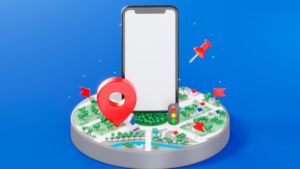Digital transformation is in full swing, with many brands focused on providing more digital options to their audiences – whether they’re a service provider like a restaurant marketing agency or a longstanding retail brand with both in-person and virtual touchpoints.
More technology solutions can streamline the process and improve the experience for customers, especially tools like self-service POS or AI-powered chatbots, but there could be something missing from the experience. Customers like quick, simple tools, but no interactions with humans during the process can leave the experience feeling cold.
Customers are busy and want to save time, but they still need to feel a connection to a brand to build a business relationship. They want to know they’re heard, respected, and valued – and that takes the human touch.
Why Does Humanization Matter In The Customer Experience?
There’s no doubt that technology makes customer experiences faster, simpler, and arguably more positive. While a lot of issues can be solved without human involvement, some brands need a human to step in at the right times.
Massive brands like Amazon have succeeded in taking humans out of the process. The platform is digital, as are the interactions at every stage. Customers search for products they want, read reviews and customer answers to make their decision, compare prices, and complete checkout on the app or website – never interacting with an actual human.
The key here is that Amazon customers expect this experience. They understand it’s a huge marketplace with various online sellers and that they won’t get a concierge service. They’re looking for the best selection, the best prices, the fastest shipping, or the high-performing products. It’s all volume for Amazon.
Some brands have customers with different, more personal expectations for how much human interaction they’ll receive and the options to have a real person help with an issue or concern they’re having.
For example, many brick-and-mortar retailers have embraced digital transformation to keep up with evolving customer needs. They’ve launched e-commerce platforms, integrated inventory management with real-time data, or offered features like same-day delivery. Even though they’re using digital strategies like personalized email campaigns, SEO, and social media posts, it serves to drive more business to the physical location.
At a time when consumers demand online presence, these innovations can help brands stay relevant while maintaining the quality of the in-store experience. A good example of this is a luxury fashion brand with limited online product options and a carefully curated experience in
store, such as assisting with product selection and styling or creating a welcoming environment. Technology is part of the experience, but it’s not the whole experience.
How To Keep The “Human” In The Digital Customer Experience
Not sure how to balance the digital with the human interaction? Here are some strategies:
Make the Customer’s Needs The Number-One Priority
With the wealth of data at your disposal and customer personas and insights, it’s easy to label your customers. A great customer experience is more than being satisfied or unsatisfied, though. They need to get the product or service they need, simply and easily, and finish the process with a positive feeling that makes them want to share with friends and family or return for a future purchase.
If you fail to meet those needs at any point, whether you mean to or not, you’re giving the customer a negative experience and possibly losing their recommendation and future purchase. Take some time to evaluate your customer experience at every touchpoint and see how technology can enhance it, not replace it.
Make It Personal
Personalization has become a bit of a buzzword in marketing, but it has value. Personalization is more than a first name in a promotional email or a birthday message with a 10% coupon code.
For customers, personalization is more about building a connection that’s tailored to their needs and wants. This may include offering suggestions for products or services that may be helpful, recommending complementary products that can make a previous purchase more useful, and anticipating what they need before they need it.
Data is a great way to learn more about your customers, but it’s not enough on its own. You have to get to know the customers and understand how their needs change over time. That can’t happen if you’re only looking at the numbers – you need real dialogue.
Another critical aspect of personalization is respecting boundaries. Recommendations can quickly shift from helpful and valuable to pushy, invasive, or even creepy, ruining the positive experience you’re aiming for.
Foster Organic Engagement
Customers need to feel valued in a business relationship. They don’t want to be just another number on a spreadsheet, which is often a reason customers choose to support small businesses over massive brands. They’d rather put their hard-earned dollars toward a real person – and they want to feel valued in return.
Strive to keep every interaction genuine, even if it’s happening online. You can chat with your customers on social media or in an email thread and show personality and interest. Another option is to do live videos that answer customer questions and start a human dialogue.

Listen To the Customer Perspective
When customers reach out with a complaint or concern, they’re looking for empathy as much as a solution. They may feel frustrated, confused, or even angry, and they’re looking for validation and acknowledgement of their feelings. If you don’t seem like you care about how your products or services affect your customers, they’ll assume they don’t – and look for an alternative.
Always keep empathy at the forefront of your communication to foster a bond that’s build on trust and two-way conversations, leading to more loyalty and a customer who still believes in you after you’ve let them down.
This culture needs to be evident throughout your whole team. Focus your training on empathy and solutions. You want representatives who can acknowledge the customer’s feelings, advocate for them, and offer solutions or alternatives. You may find that some customers are just happy to know you care enough to listen.
Show Authenticity
Customers are seeking authenticity for brands, and they know when you’re falling short. If you don’t display consistency across your marketing communications, it stands out and harms your brand reputation.
For example, don’t create content or messaging that touts your business as something that it’s not, such as claiming to be environmentally friendly while wasting natural resources in your manufacturing processes. You don’t have to get it all right all the time, but you do have to be honest and transparent.
One way to show your authenticity is to share your successes and failures. People want someone to root for, and hearing how you built your business from the ground up and overcame challenges along the way is a real story they can get behind.
Create Seamless Omnichannel Experiences
Customers engage with brands across multiple platforms, from websites and mobile apps to email and in store. Wherever this interaction happens, customers expect a consistent, connected experience that feels human, not robotic or fragmented.
Omnichannel strategy ensures that all touchpoints accurately reflect your brand’s personality and values. For example, if a customer starts a chat on your website, they should be able to call customer service later without repeating the whole story. Or if they abandon a shopping cart online, a helpful follow-up email can be a gentle re-engagement that doesn’t come off as pushy.
Each channel also needs to provide opportunities for authentic engagement. A helpful blog post, a warm tone in an email, or a live social media response from a real person – not a chatbot – can show your customer that there is a human working behind the scenes to help.
Empower Employees To Be Brand Advocates
The human side of the customer experience should include one of your most valuable assets – your employees. Technology helps the processes, but your team brings your brand to life. An empowered team can make or break how the customer views your business.
What does empowerment mean? Your employees should have the tools, training, and autonomy to solve problems and connect with customers. This could be allowing staff to offer personalized recommendations, resolve complaints without a lot of escalation, or send a thank you to a loyal customer without asking for manager approval.
Employees who feel trusted and valued are more likely to show that to their customers. When the customer interacts with someone who is genuinely engaged and believes in the brand, they walk away with a positive impression and share it. This also helps you attract talent and gain a reputation as a brand that employees want to work for.

FAQ – Building Genuine Relationships Through Human Interactions
1. Why focus on human interaction in marketing?
Because people trust people, not ads. Human connection builds loyalty and long-term relationships.
2. What does human interaction mean online?
Personal replies, real stories, empathetic communication, and active engagement—not just automated messages.
3. Can small brands do this?
Yes. Smaller teams can respond faster and more personally, building stronger trust.
4. How can I start?
Audit your touchpoints, create a friendly tone guide, train your team, and respond with empathy.
5. What should I track?
Engagement quality, repeat customers, response time, and customer satisfaction—not just likes or followers.
6. Does automation still help?
Yes, use it for routine tasks—but always keep a human touch where it matters most.
Don’t Lose Your Brand’s Humanity
Technology is a helpful tool to improve operational efficiency and improve the customer experience, but it can’t replace the human element. Technology tools with no human interactions just come off as cold and impersonal. Use these strategies to build a human connection at each touchpoint – and nurture the loyal relationships you want.
Author Information
Author Name:
Chris Bretschger
Author Bio:
Chris Bretschger, Managing Partner at Bastion Agency, is a seasoned marketer with over 20 years of experience in integrated marketing. He has developed brand strategies, managed media campaigns, and built analytics tools for clients like Mazda, Adidas, Jenny Craig, and Kia. When not leading Bastion, Chris enjoys superyacht regatta racing on the open seas.
Author Headshot:






